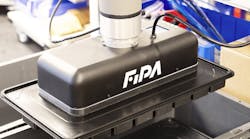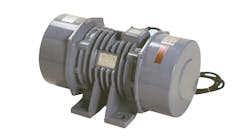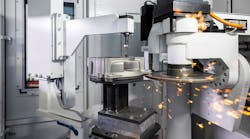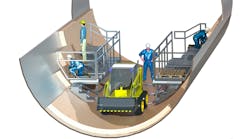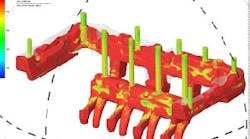FLOW SCIENCE INC. released a new version of its FLOW-3D Cast simulation software developed for metalcasters, tool makers, and casting designers. FLOW-3D Cast Version 3.5 introduces new capabilities to model iron solidification and shrinkage, cavitation potential, prediction of core-gas generation, sand core blowing, and core and mold drying. A new permeable mold model is available to model air escape during filling. Also, users can make use of temperature-dependent material properties to predict solidification-related defects more accurately.
The new version also presents an updated graphical user interface, and offers fasters processing speed as well as an integrated CAD translation tool.
According to David Souders, Flow Science’s Vice President of Sales, Marketing & Support, “FLOW-3D Cast was originally developed by foundry-oriented partners of ours. After realizing the usefulness of the industry-focused interface, with its more-intuitive design for model setup, we acquired the rights to the product and made a number of valuable changes.
“Among other things, we’ve streamlined the product development cycle to sync the release of FLOW-3D Cast more quickly with the latest version of FLOW-3D’s solver,” Souders indicated. “The addition of the fluid structure interaction and thermal stress evolution models later this year will be the final step in this process.”
FLOW-3D Cast is offered in three ascending levels of utility: Basic, Extended and Advanced. The Basic version is positioned as an affordable entry-level product for the foundry market, while Extended offers additional capabilities necessary for high-pressure diecasting shops.
The Advanced version is aimed at larger operations seeking to make use of the most sophisticated physical models, such as the sand core and mold suite. The Advanced version allows access to the FLOW-3D interface to enable the user to run non-casting simulations, such as auto manufacturers modeling sloshing, tank filling, and more. Because all versions use the same core FLOW-3D solver, the accuracy of filling and solidification results is equivalent across all versions.
All versions of FLOW-3D Cast take advantage of parallel processing on multiple cores.
The new release is available now for download by FLOW-3D Cast users who are under maintenance service contracts.
Visit www.flow3d.com.

